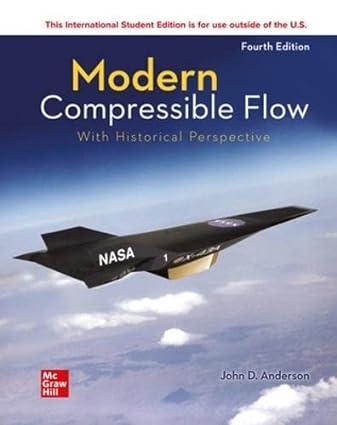For the conditions of problem 16.9, calculate the internal energy of the mixture in joules per kilogram,
Question:
For the conditions of problem 16.9, calculate the internal energy of the mixture in joules per kilogram, including the translational, rotational, vibrational, and electronic energies. Note the following physical data: For \(\mathrm{O}_{2}, \Delta H_{f}^{0}=0\), \(v=4.73 \times 10^{13} / \mathrm{s}, \varepsilon_{\mathrm{el}_{1}} / k=11,390 \mathrm{~K}, g_{\mathrm{el}_{o}}=3, g_{\mathrm{el}_{1}}=2\) (ignore higher electronic levels); for \(\mathrm{O}, \Delta H_{f}^{0}=2.47 \times 10^{8} \mathrm{~J} /(\mathrm{kg} \cdot \mathrm{mol}), \varepsilon_{\mathrm{el}_{1}} / k=228 \mathrm{~K}, \varepsilon_{\mathrm{el}_{2}} / k=\) \(326 \mathrm{~K}, g_{\mathrm{el}_{o}}=5, g_{\mathrm{el}_{1}}=3, g_{\mathrm{el}_{2}}=1\) (ignore higher electronic levels).
Data From Problem 16.9:
Consider an equilibrium chemically reacting mixture of oxygen at \(p=\) \(1 \mathrm{~atm}\) and \(T=3200 \mathrm{~K}\). The only species present are \(\mathrm{O}_{2}\) and O. \(K_{p, \mathrm{O}_{2}}=\) \(0.04575 \mathrm{~atm}\). Calculate the partial pressures, mole fractions, mole-mass ratios, and mass fractions for this mixture.
Step by Step Answer:






